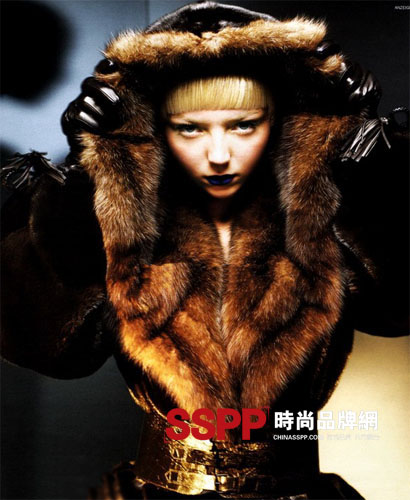Environmental protection for fur: Is there any trace of fashion in fashion?

How can individuals play a role in environmental protection? According to the climate change assessment report issued by the UN Intergovernmental Panel on Climate Change, greenhouse gases emitted by human activities (mainly carbon dioxide) are the main cause of global warming. Recently, a "personal carbon calculator" has become popular on the Internet. According to calculations, the annual carbon emissions of a city's white-collar workers amount to 2,000 tons. Faced with such an amazing "individual power", the "low-carbon family" lifestyle is quietly popular.
“Call for environmental protection: don't buy clothing for one yearâ€, “low-carbon life, start from 'prime'†and “look for happiness from low-carbonâ€... similar titles can be seen everywhere in major portal websites and online forums. The term “low-carbon†not only appears in the political, economic, industrial, and other fields, it also becomes a positive and progressive environmental protection concept, an obligation, and a fashion.
The rise of environmentally friendly fabrics
The smell of gunpowder at the Copenhagen climate conference has not completely receded. The world's major "environmental fashion show" has played the "environmental fabric" campaign. Soft, breathable bamboo fibers and biodegradable natural materials have become the darlings of designers. In the Spring/Summer series of China International Fashion Week last year, Chinese designer Liang Zi used “silk silk†to save this old Chinese fabric that was on the verge of loss. Although the production process of silk crepe is very tedious, it is soaked with plant juice and made by hand. Liang Zi called it "the green fabric of the world".
The environmental protection hot whirlwind not only swept the fashion week, but also blew up the new trend of environmental protection of major brands. In addition to using linen, cereals and other raw materials to promote environmental protection, GUESS also introduced organic cotton green jeans, and named after "GUESSGreen". In this series of products, the concept of “green†is even detailed and the label is printed with 100% recycled paper and soybean ink. LVMH's EDUN brand not only uses organic cotton, it also relocates its production lines to Africa and teaches local residents how to grow, sew, and spin. The “fast fashion†that has been criticized by environmentalists because of waste caused by the renewal of clothes quickly began to actively carry out environmental protection projects. The environmental protection series launched by the representative brand H&M adopts organic cotton, organic wool, reused wool, and other environmentally friendly fabrics and hangs them out. Certain trademarks are "low-carbon" people who provide convenience when purchasing environmentally-friendly clothes.
Prev 1 2 Next Full Story
